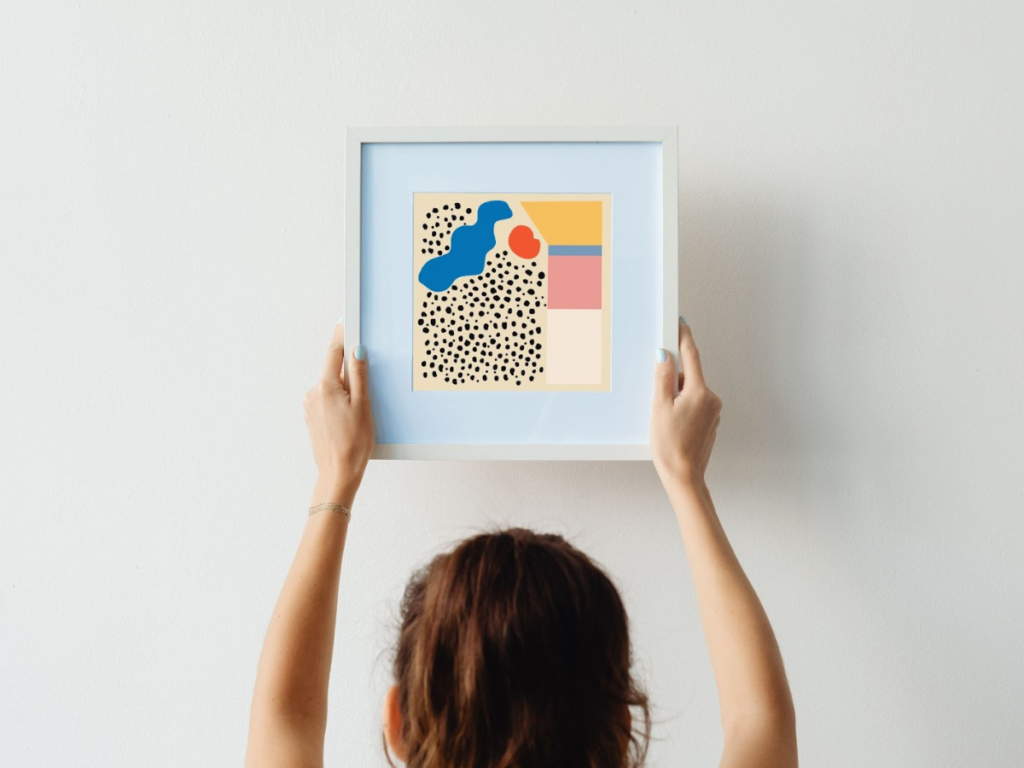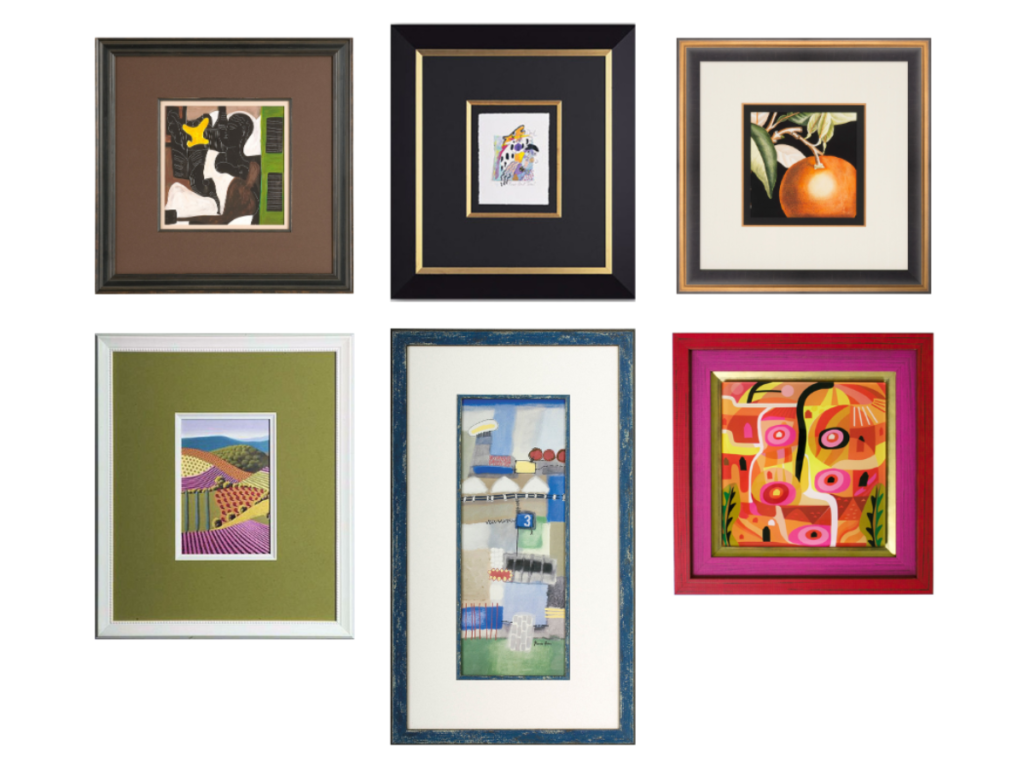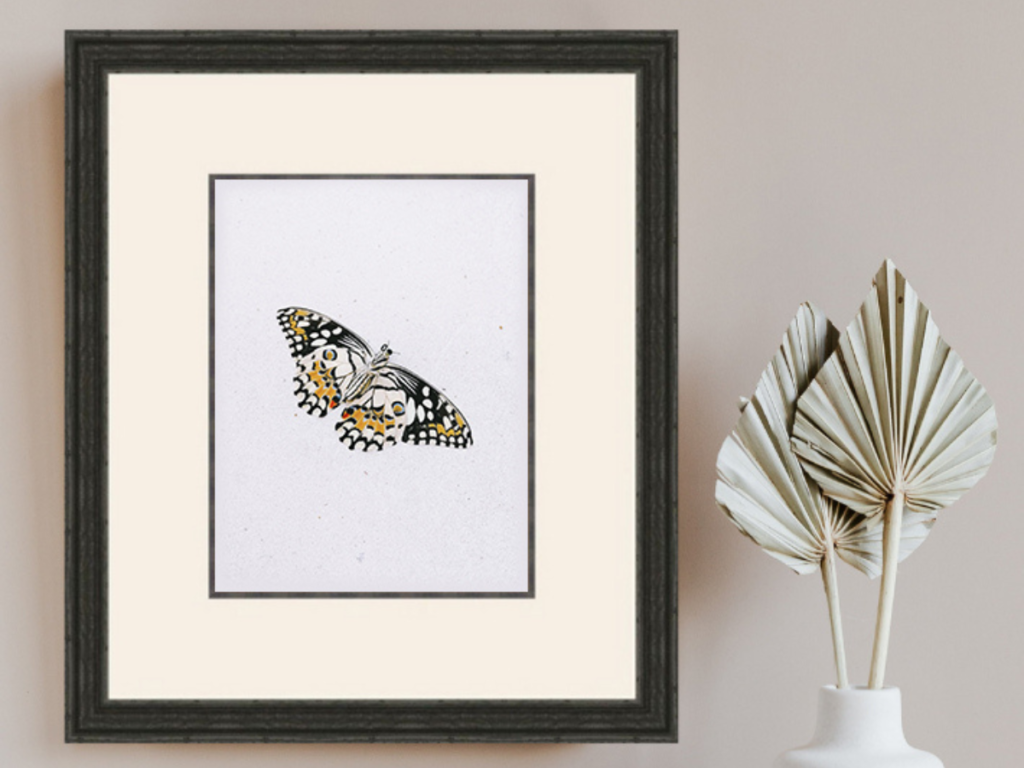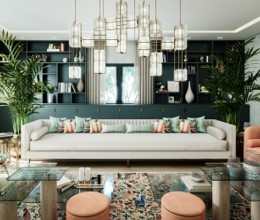How to Custom Frame Your Artwork Like a Pro
Custom framing offers a multitude of options so you can create the ideal frame to complement your art and elevate your home decor. Your local FastFrame designer can walk you through all the choices, but some folks prefer to have a sense of what they want before heading to the store. If that sounds like you, we’ve got you covered! We collected the best custom framing tips to help you design your frame with confidence. From frame colors to accent mats to conservation glazing, we cover everything you need to know to create the perfect frame for you!
“Where Do I Start?”
Before you do anything else, take a good look at your artwork. Is there a focal point your eye is naturally drawn to? Is there a hue you want to highlight through your framing choices? Is the tone warm or cool? Does it feel formal or casual? Energetic or peaceful? Think about where it will be displayed. What is the decor like in that space? Traditional, modern, eclectic?
Keep these answers in mind when making your custom framing choices. In general, you select matting to compliment the artwork and you choose a frame to compliment the room where it will be displayed (though if you have more eclectic tastes, the frame can reference the artwork.) Just remember that you always want your art to be balanced by its frame, not overshadowed by it.

“How Do I Choose the Right Mat?”
Your mat choice should enhance your artwork and help achieve visual balance. Since there are so many options, we’ve outlined a few simple tips for choosing a color, size, and accent mat.
Choosing a color
- Pinpoint the undertones in your art by noting which colors are the third or fourth most predominant
- Choose a mat color that highlights the undertones in your art (but avoid anything too bold)
- Pick a tan or gray neutral mat that complements the undertones in your art
- For a simpler option that will look good in any space, pick white (crisp, modern), ivory (traditional, vintage) or black (dramatic, moody)
Choosing a size
- In most cases, you want your mat to be at least 1” wider than the width of your frame (most mats are 2-4 inches wide)
- Generally, larger artwork supports a wider mat and smaller artwork is paired with a narrower mat
- Choose an oversized mat if you have a smaller piece and you want to make a big impact

Choosing an accent mat
- Framers commonly pair a lighter main mat with a mid-range or darker tone accent mat
- A neutral accent mat can soften the composition or provide contrast for overall balance
- Pick one or two color accent mats to highlight additional undertones from your art
- If you want to highlight a bold hue, do it with an accent mat: it delivers a small pop of color without overpowering art
- Fail-safe pairings: two neutral mats, neutral main mat + color accent mat, two color mats in different shades of the same color

Keep these answers in mind when making your custom framing choices. In general, you select matting to compliment the artwork and you choose a frame to compliment the room where it will be displayed (though if you have more eclectic tastes, the frame can reference the artwork.) Just remember that you always want your art to be balanced by its frame, not overshadowed by it.
Choosing no mat (full-bleed framing)
- Go with this option if you want a minimalist look that works well in modern, pared-down spaces
- It’s especially suited for posters and prints with lots of negative space around the main image
- This style is optimal for large and oversize pieces that are best presented without a mat

“What Are My Mounting Options?”
Mounting is the method used for holding your artwork in place within the frame. There are several options that you can choose from.
- Dry mounting permanently attaches and flattens your artwork with a heat-activated adhesive; it is ideal for open-edition prints and posters
- Semi-permanent mounting also attaches and flattens artwork, but it allows it to be removed from its backing using heat; it is also ideal for open-edition prints and posters, in some cases it can be used for collectible art that is not heat sensitive
- Hinge mounting attaches artwork to a backing board or mat using hinges or small pieces of acid free tape; it is ideal for more valuable items such as original art and family heirlooms
- Float mounting raises artwork off the backing with a panel concealed behind it, creating a shadow between the image and backing; it is ideal for artwork with unique edges and 3D objects

“How Do I Choose the Right Frame?”
The ideal frame will enhance your room’s decor while complementing your artwork. Think about the feel of the room where the art will hang and whether you want your artwork to fit in with that decor or stand out as a statement piece. When you have that decided, then you can choose the frame style, material, color, and size. There’s certainly a lot to consider, so we’ve gathered our favorite tips to simplify the process!
Complementing existing decor vs. setting the mood
- Your frame choice should complement the existing woods and colors in the room—unless your artwork is being used to set the mood in the space
- Think about balance: if a kid’s room is full of wood furniture, opt for a colorful frame to liven it up, try a simple black frame in a room with jewel tone walls, or go for a light wood frame in a room that feels dark
- If your artwork is setting the mood, choose a frame that references the artwork, such as a color frame that pulls from the art’s undertones or a simple black frame for modern black and white photography

Choosing a frame material
- Wood adds warmth and a natural element to your space; it suites many styles depending on the type of wood (white oak feels boho, while mahogany has a more traditional vibe)
- Composite wood with a color finish can also complement a range of styles depending on your choice (try a primary color for a pop art statement or white for a simple, clean style)
- Metal tends to have have a sleek, modern look (black has a classic feel, silver skews more industrial, and gold feels luxe)
Choosing a frame color
- Black and white are classic options that will work with almost any space and artwork
- Metallic finishes have a luxurious feel and can look traditional/vintage or modern depending on the style of the frame
- Pick a neutral frame that complements the tones in your art and your room
- Choose a color frame that highlights an undertone in your art; for an extra funky look, take a cue from the color wheel and choose a complementary color frame

Choosing a frame size
- You are balancing the sizes of three elements: your art, mat choices, and frame (for example: a thin frame can balance an oversize piece of art without a mat, while a medium-sized frame complements a small photograph with an extra wide mat)
- Generally, you want your mat to be at least 1” wider than the width of the frame.
- A wider frame makes a bolder statement by showing more of the frame material and color
- A thinner frame calls more attention to the artwork and matting choices
- Look at your art with several different width frames and trust your eye—when all of the elements work together to draw your eye to the art and truly enhance it, that is the most pleasing proportion

“Do I Really Need Conservation Glazing?”
If you’re new to custom framing, it’s hard to know if conservation glazing is really worth it. Ultraviolet light, either from direct sunlight or fluorescent light, will cause your artwork to fade over time. In order to protect your artwork, FastFrame recommends conservation glazing, which is available in glass and acrylic options. Conservation glass is fine for almost anything you wish to frame. But, conservation acrylic should be considered if the artwork is going to hang in a bathroom, a child’s room or if you live in an earthquake prone region. It will help protect the artwork from steam from a shower, it is more shatter-resistant and lighter weight than ordinary glass., Our conservation acrylic has the added benefit of 99% ultraviolet protection.
The same considerations apply if you are framing a digital photo, original art, vintage family photos, diplomas, collectible jerseys. If you are hanging the artwork in a hallway without much light, regular conservation glass is fine. However, be aware of any special circumstances and use conservation acrylic when necessary.

Wow, we sure covered a lot of ground! We answered the most popular questions we receive from new customers that would like some help with their custom-framing projects. Need more assistance? Be sure to check out our other blog posts How to Choose the Perfect Mat and How to Mix & Match Frames for more helpful design advice. And of course, you can always head to your local FastFrame store to work with one of our talented framers in person!






